One of Greece’s most famous palaces is the Minoan Palace of Knossos located at the island of Crete. Find here a complete guide to the Palace of Knossos to plan your visit.
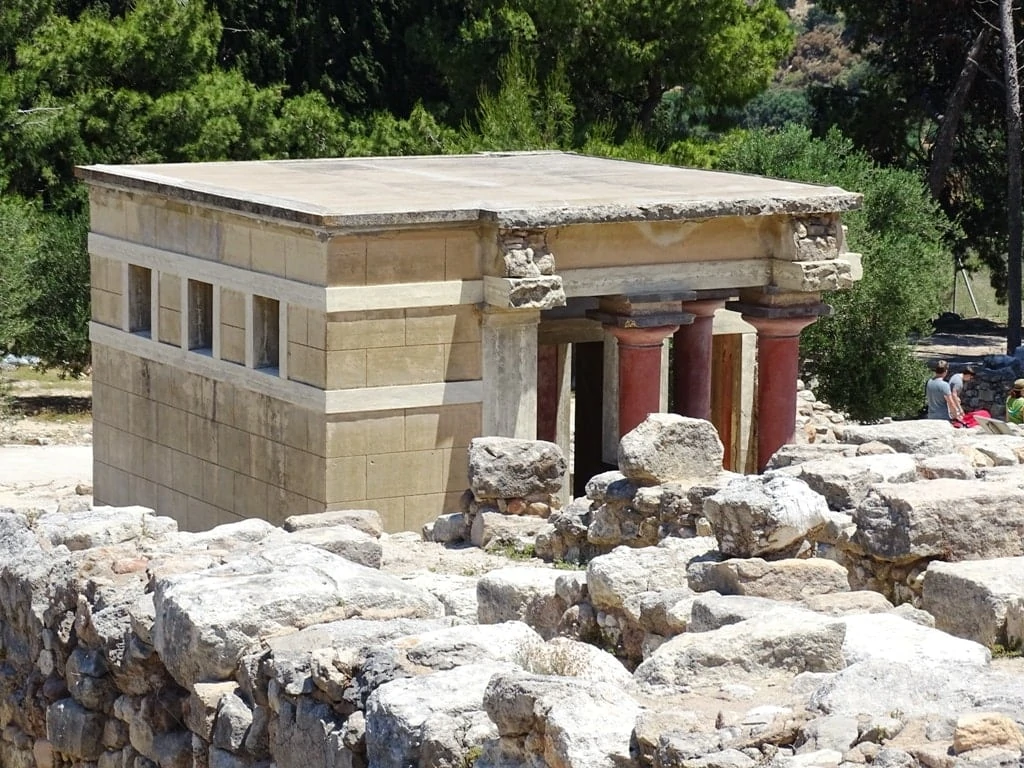
A Guide to Visiting the Minoan Palace of Knossos
History of the Minoan Palace of Knossos
Knossos is a large Bronze Age archaeological site on the Greek Island of Crete, which has been identified as Europe’s oldest city. Thought to have originally been settled during the Neolithic period, around the year 7,000 BC, Knossos initially consisted of a small group of wattle and daub huts, inhabited by a group of fewer than 50 people.
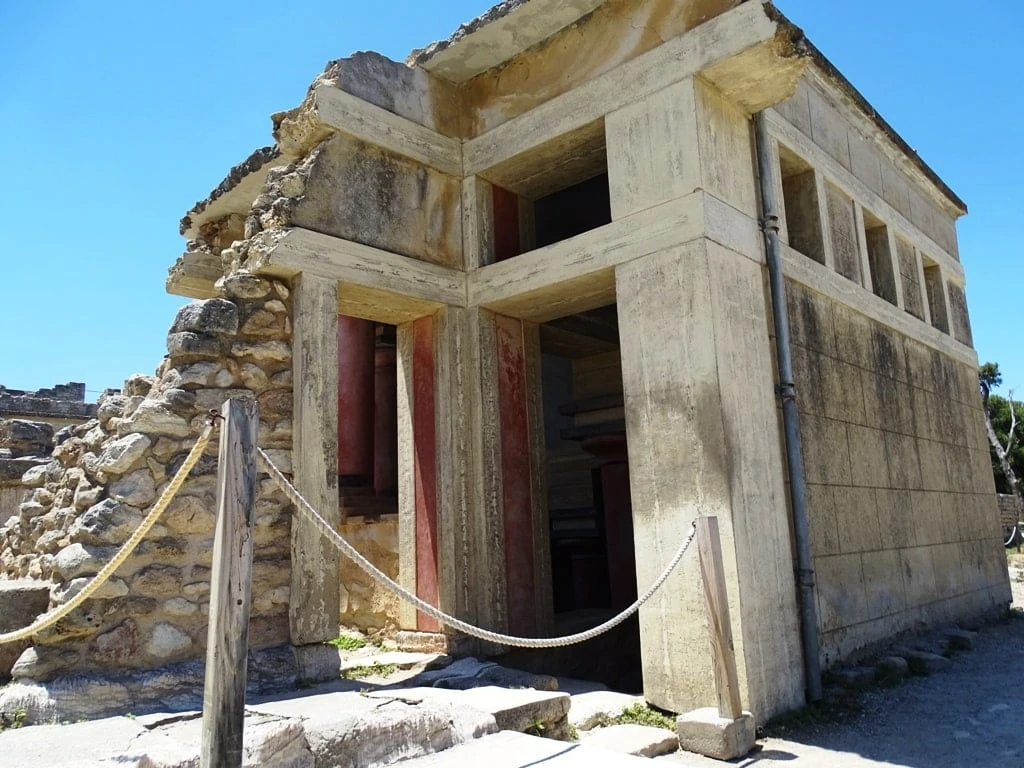
By 6,000-5,000 BC, the group appears to have grown to some 200-600 people who lived in simple one or two-room mud-brick houses, subsisting off animals that they reared and crops that they grew.
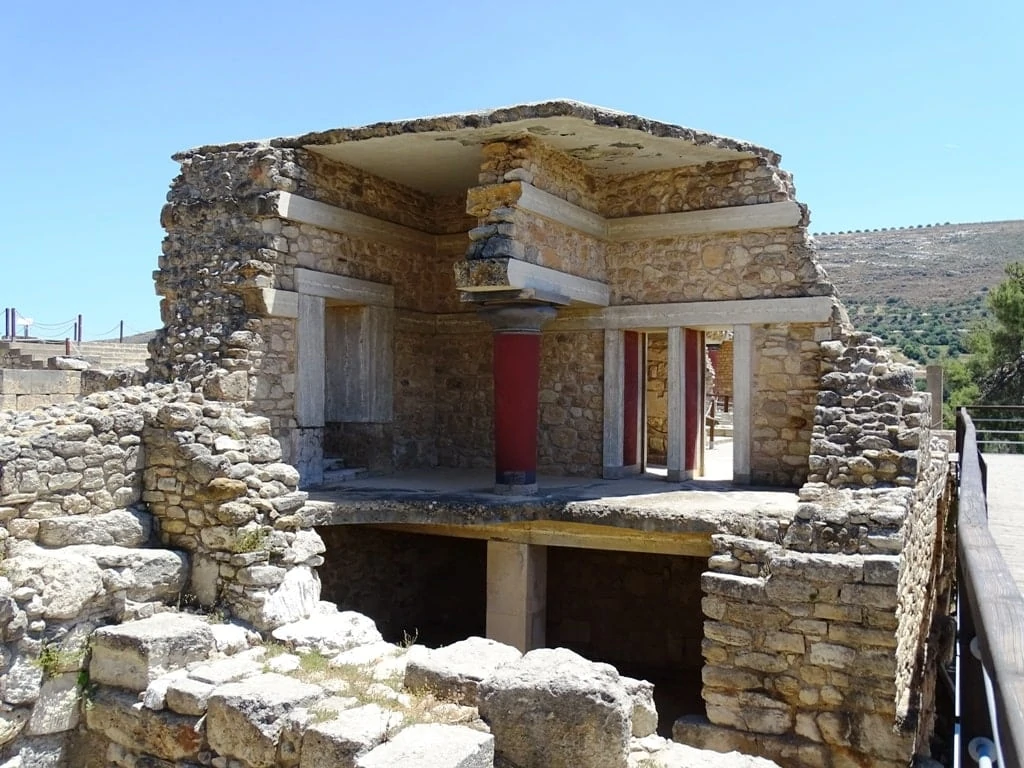
Slowly, over the centuries, these houses became larger and incorporated timber elements – as the houses grew, families in the community were able to have more privacy, whereas before they had lived extremely communal lives, sharing spaces and resources closely.
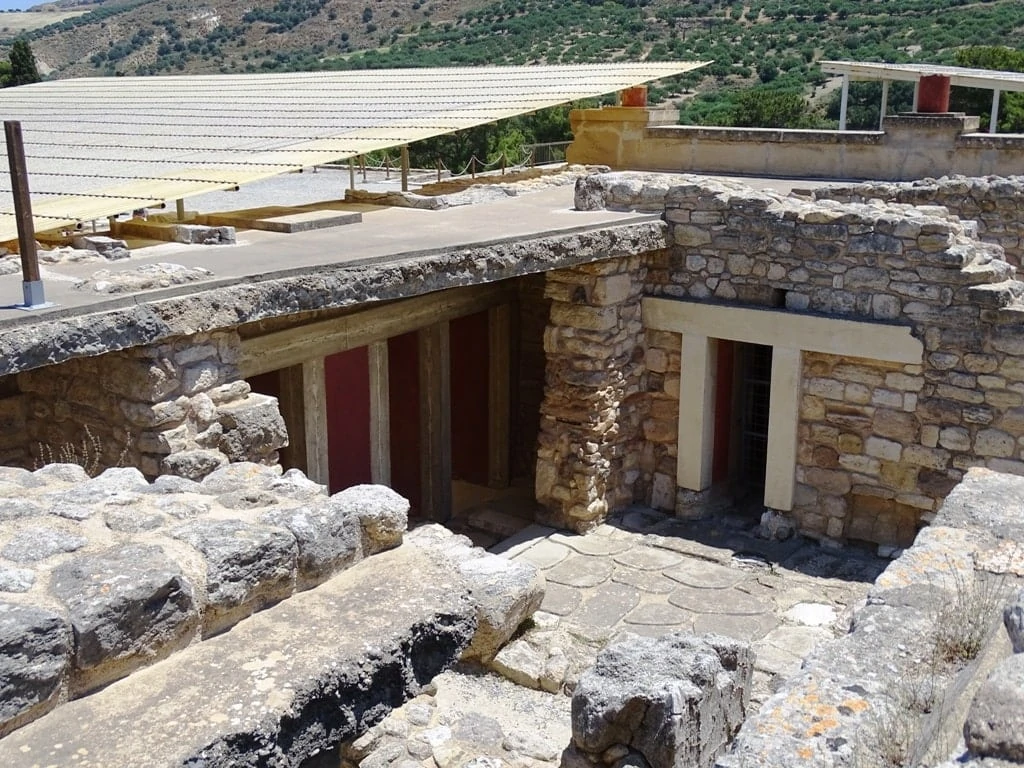
By the year 2,000 and the advent of the Minoan Period, the population of Knossos had increased dramatically, and palaces had begun to spring up across Crete.
The emergence of these palaces is a definite break from the village-style settlement characteristic of the Neolithic Period and suggests that political, economic, and religious power was concentrating into the hands of elites.
The first Minoan palaces were destroyed sometime before 1,700 BC, likely by earthquakes, leading to the construction of even greater palaces all across the island. Knossos was the largest of these, dominating Crete until the collapse of the Minoan culture around the year 1,450 BC.
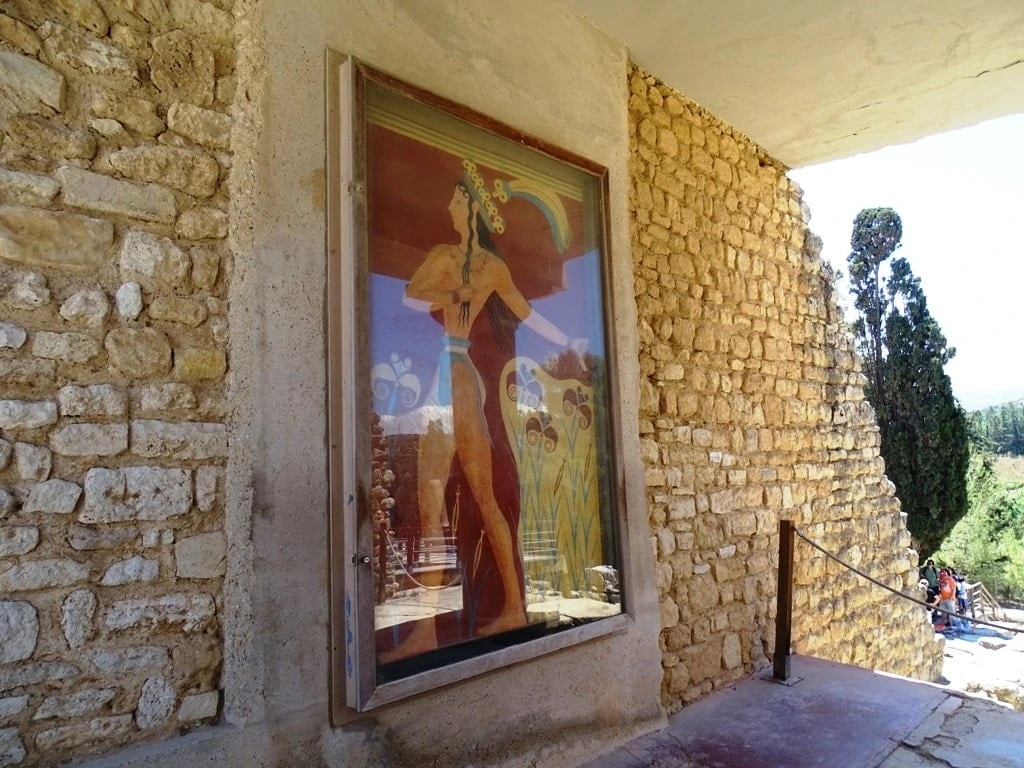
Knossos itself was only destroyed in 1,370 BC – although volcanic eruption has been suggested as a reason for the collapse, it seems more likely that invasions by Mycenaean Greeks was the cause.
Rooms on the Palace of Knossos
The Palace of Knossos was built on a grand scale. The main building covered an enormous three acres, and there were numerous outbuildings on the site as well, so that the whole site occupied six acres.
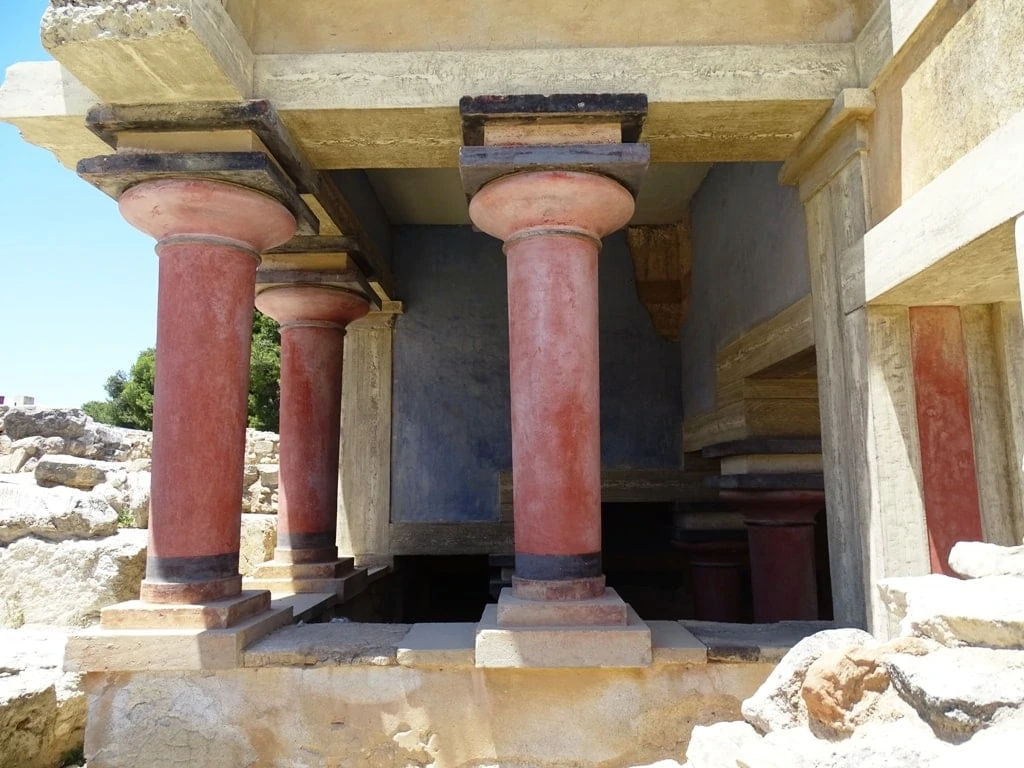
Inside the palace featured 1,300 rooms, a monumental staircase, and a series of storerooms for essential supplies as well as luxuries. Parts of the palace were constructed up to five stories high. At the center of the palace stood a throne room, in which was found an alabaster ‘throne’, as well as a bowl or tub which was thought to have been used for ritual purification.
An anteroom connects the throne room to the central court of the palace, and the throne room itself was also decorated with frescoes depicting Griffins. It has been theorized that the throne was either used by a priest-king or queen (hence the ritual bowl), or else it was used for ceremonies in which a goddess would be invoked and sit on the throne before her worshippers (an epiphany).
The architectural complexity of Knossos is not limited to the structure of the palace – the site also featured advanced water management. Aqueducts supplied Knossos with water brought from the springs at Archanes some 10 kilometers away, which was then diverted to the palace and the town through terracotta piping.

Wastewater was carried away from the complex through closed pipework to a sewer, and the Queen’s megaron of the palace even featured an example of the first known flushing water toilet system – the toilet was positioned over a drain and flushed with water poured by hand. The roof of the palace also incorporated runoff grooves for the periodic heavy rains that fall on this part of Crete.
You might also like: The best palaces and castles in Greece.
Who lived in Knossos?
There has been a great deal of debate about the function of Knossos, and who lived in this spectacular palace. It is possible that the palace may have been an administrative center or a religious center, or even both, functioning as the center of a theocratic government.
It is also unknown whether Knossos was the primary settlement on Crete, or whether the other palaces that existed competed with each other on a roughly equal footing.
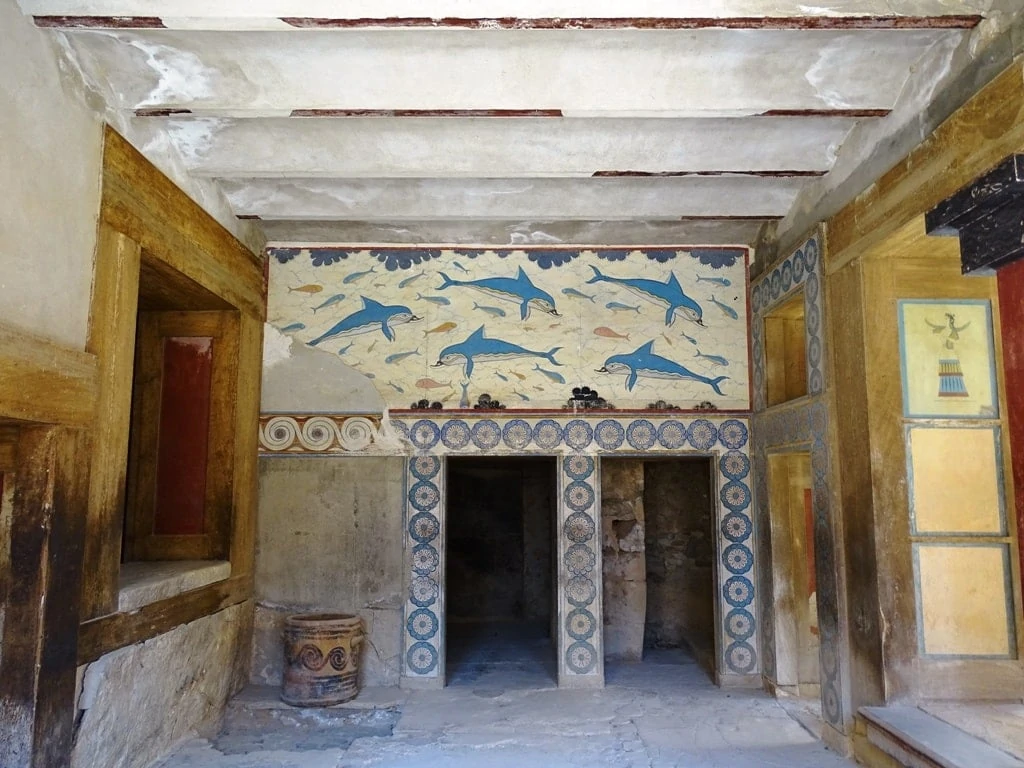
Whether or not Knossos was ruled by priest-kings or queens as has been suggested, it was almost certainly not a military site – no evidence has been found of military activity, such as fortifications or weaponry.
Although Knossos’ history is very difficult to discern, the palace was an important site in Greek mythology, as the home of King Minos. It was Minos who commissioned Daedalus, the architect, and craftsman, to build the labyrinth to hold his son, the Minotaur. In the myth, the Athenian prince Theseus managed to slay the Minotaur and escape the labyrinth with the help of King Minos’ daughter, Ariadne.
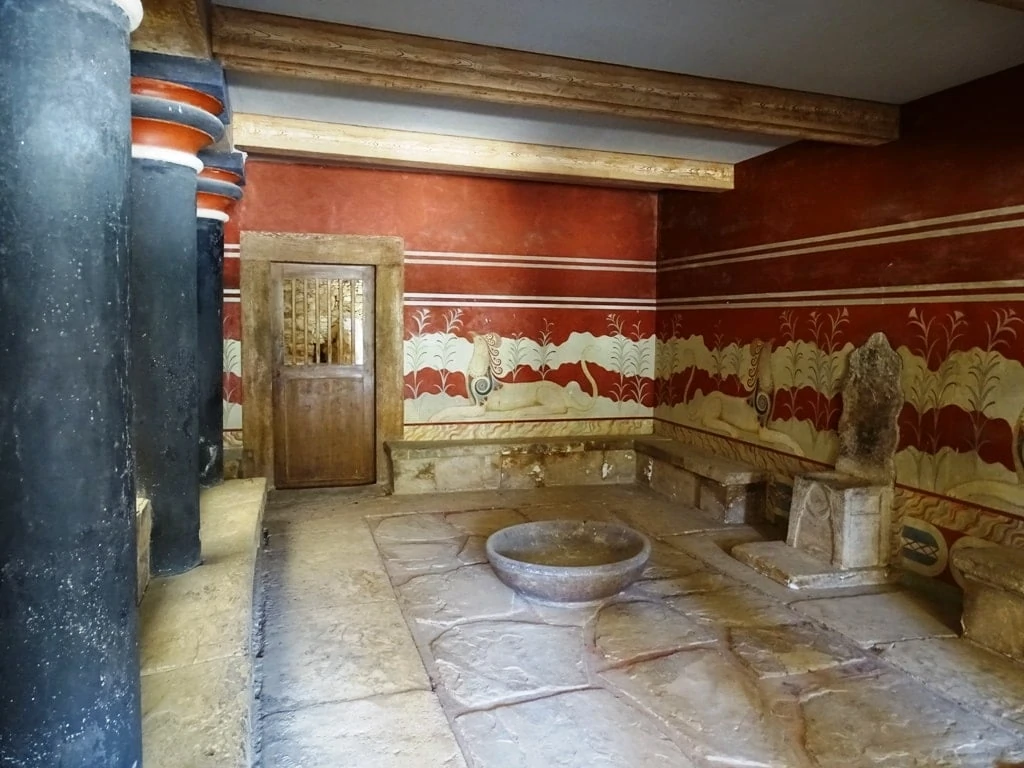
What to see in the Minoan Palace of Knossos
Although Knossos was ruined over 3000 years ago, the site today is a fantastic place to visit. Thanks to the site’s discovery by Minos Kalokairinos in 1878 and subsequent excavations by Sir Arthur Evans from 1900-1931, visitors can view remnants of a large section of the palace complex, as well as parts of the ancient city that surrounded it.
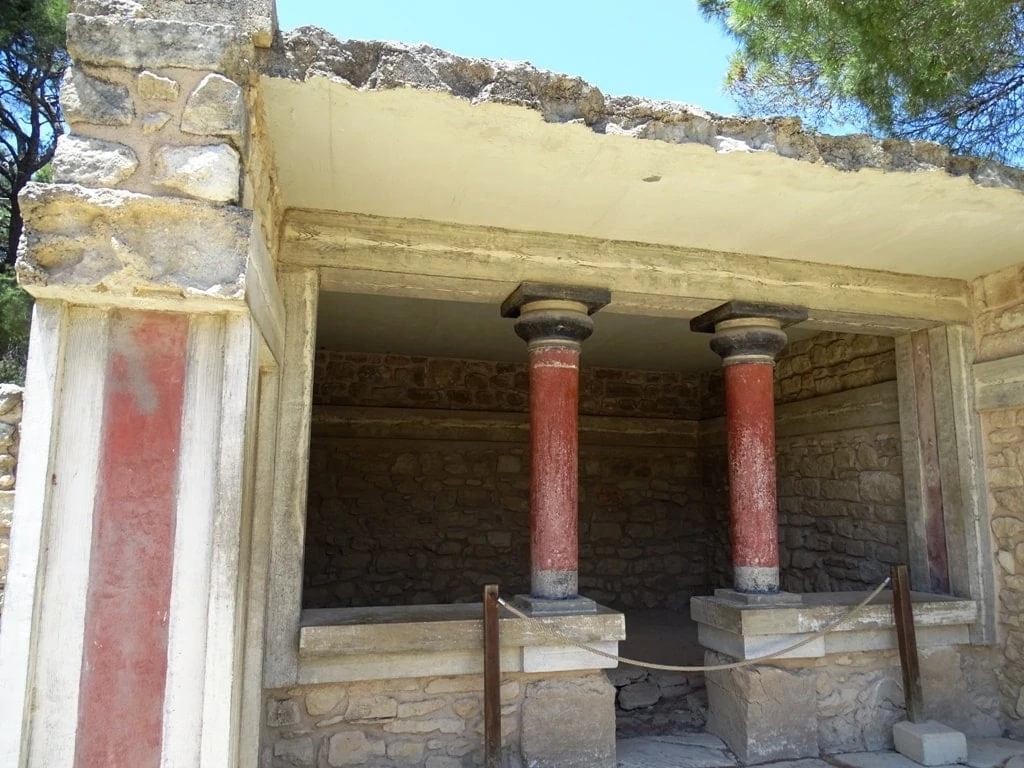
It is not just ancient foundations that can be seen, but sections of walls and interiors too. Reconstructions of parts of the palace were also built by Evans, primarily in order to protect the newly excavated sections of Knossos – these reconstructions have the added benefit of allowing visitors to imagine the immense grandeur of the Palace of Knossos in its heyday.
How to get to Knossos
Knossos is very easy to get to from the capital of Crete, Heraklion. Standing only five kilometers south of the city, the Palace is accessible by car or bus. A regular public bus (Number 2) runs several times every hour from Heraklion’s bus station A and is very cheap.
Opening Hours and Tickets for the Palace of Knossos
Summer opening hours last from 8.00-20.00, while in winter the site is open from 8.00-17.00. Entrance is €15.00 and guided tours lasting one hour and thirty minutes are also available for groups of up to five, at a cost of €160.00.
Buy your tickets online here. Alternatively, book here your skip the line ticket with a guided tour.
